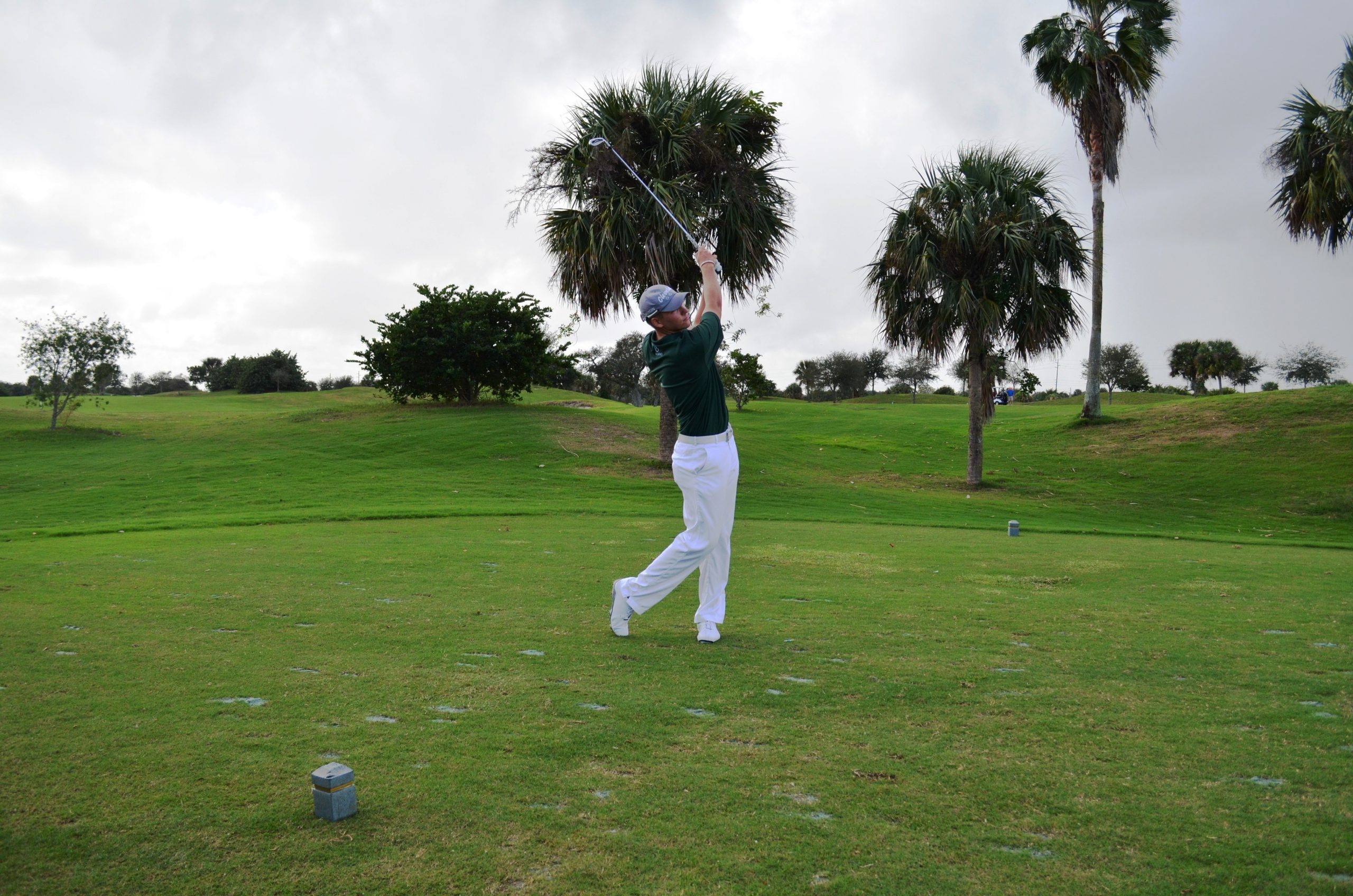By Thomas T Wartelle, WGTF Master Teaching Professional
Great ball strikers all have something in common. They consistently achieve five factors at impact in relation to the intended target line. I abbreviate “intended target line” as ITL. The ITL is the benchmark target the golfer is trying reach starting at impact.
The five human performance factors at impact are: 1) clubface position to the ITL, 2) club path to the ITL, 3) centeredness of contact, 4) angle of approach, and 5) clubhead speed. All great ball strikers achieve a high level of each of these components. However, two really stand out, clubface position and centeredness of contact. If one does not strike the ball with the center of gravity or sweet spot of the golf club, there can be other influences on the ball flight.
One such factor that can influence the ball flight is the gear effect. The gear effect has influence on the spin axis. To understand this, you must understand some basic principles. All golf shots have backspin, not sidespin. To be simple, imagine a golf ball in the air with wings on each side. When the “wings” are horizontal, the ball flight will not curve. If the “wings” tilt down left, the ball flight will curve left. If the “wings” tilt down right, the ball flight will curve right. Again remember, all shots have backspin rotating on a center axis. The ball flight curvature is just a tilted axis.
Therefore, a golf shot stuck on the sweet spot is influenced by the face and path at impact. A simple phrase I use: clubface sends it, swing path bends it. The combination of the face and path at impact determine the ball flight. However, when the ball is struck off center, the gear effect also becomes a factor. A ball struck towards the heel of the club or the toe of the club imparts more influence on the spin axis. For a right-handed golfer, a heel strike has more right-biased spin axis, and a toe strike has more left-biased spin axis. This becomes more influential with clubs like the driver and fairway woods because the center of gravity is further back. The gear effect is more pronounced on these types of clubs.
The last two human performance factors at impact are angle of approach (or attack) and clubhead speed. The angle of approach can dramatically affect the club path and clubface position. A simple thing as a change in the angle of attack can impact dynamics for better or for worse. This gets into a discussion of the D-Plane, which I will leave for another article. Lastly, the clubhead speed at impact has obvious influence on the ball flight. However, notice I put it intentionally last. Speed is important but is the least important of this group.
As teachers, remember this tip: The easiest impact factors to change are clubface position, centeredness of contact, and angle of attack. A person’s ability to increase speed may be limited, and their overall swing direction is probably already ingrained. However, a simple change in ball position could completely change a person’s clubface position, centeredness of contact, and angle of approach at impact. Changing the angle of approach can change the club path at impact to the ITL – all of this without ever changing the golfer’s overall swing direction. Remember at impact, the club face sends it; the swing path bends it!
Copyright © 2023 United States Golf Teachers Federation, All Rights Reserved
200 S. Indian River Drive, Suite #206, Fort Pierce, FL 34950
772-88-USGTF or 772-595-6490 - www.usgtf.com
200 S. Indian River Drive, Suite #206, Fort Pierce, FL 34950
772-88-USGTF or 772-595-6490 - www.usgtf.com

